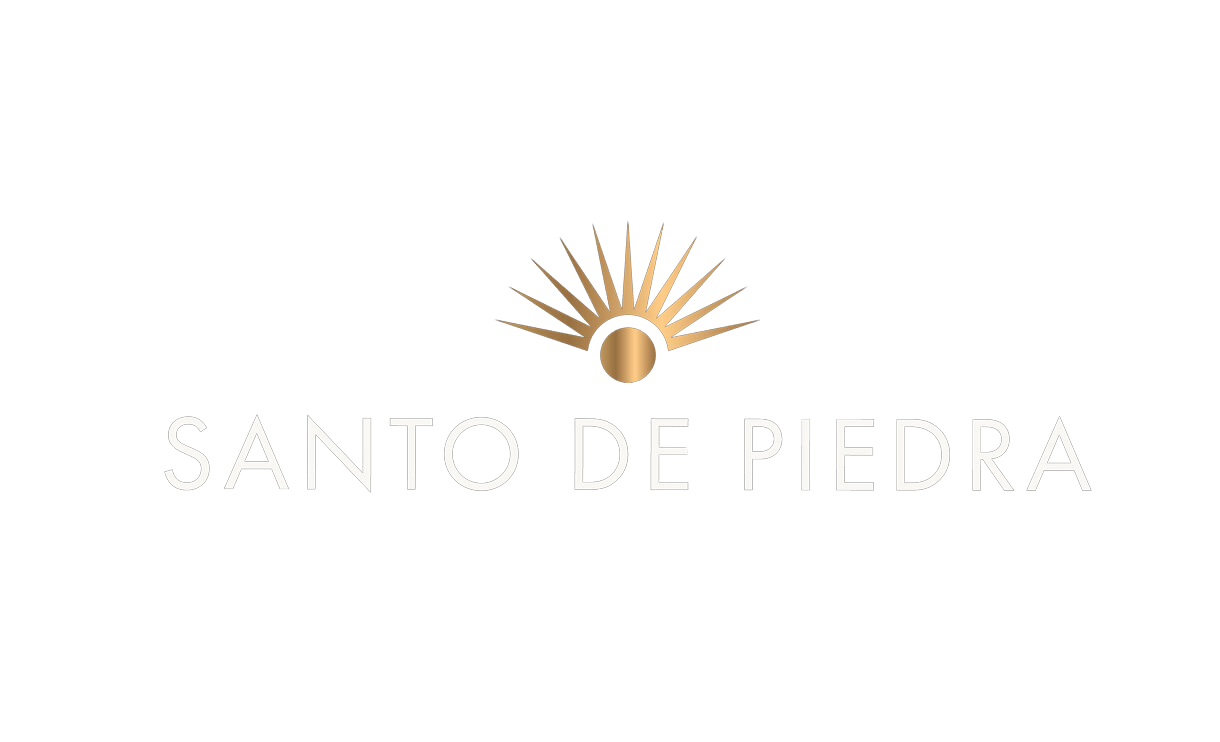The Making of Santo de Piedra: Vision, Craft, and Curatorship
The Making of Santo de Piedra: Vision, Craft, and Curatorship
By Raul Injoque
From the moment David Giles first walked among fields of wild agave, he saw not just plants, but stories. Trained as a museologist and curator, David understands that objects — whether ancient relics or contemporary bottles — carry weight: of history, ritual, identity.
An important chapter of his journey began at the Museo Textil de Oaxaca, where David worked as part of a project to document and preserve traditional weaving knowledge. To truly capture the voices of artisans, he had to enter their homes and gain their trust. In Oaxaca, such conversations often begin with mezcal. Families would offer a copita, not as a gesture of indulgence, but as a bridge: mezcal was a way to open the heart, to honor the guest, to ground the exchange in sincerity.
David, during a conversation with foreign curators at the National Museum of Popular Cultures, 2015
It was in those kitchens and courtyards — surrounded by looms, textiles, and the scent of roasted agave — that David first understood mezcal not only as a drink, but as a living culture. It was part of storytelling, of hospitality, of identity. That experience planted the seed that would later grow into Santo de Piedra.
Years later, in Fledge Peru, David met the first investors and partners Patrick Hennig and Raul Injoque. Together they refined the vision: mezcal that would not merely be consumed, but experienced. David’s museological background gave form to the brand’s identity. He led the aesthetic voyage — defining the bottle as a sculptural object, choosing textures and symbols that would echo the land, and curating every detail as if it were part of an exhibition.
From left to right, David Giles, Patrick Hennig and Raul Injoque in a visit to agave plantations in the Oaxaca’s southern mountains
With a clear identity and a refined product, David envisioned Santo de Piedra as a luxury spirit with international resonance. He decided to debut in one of the world’s most discerning markets — London. Positioning mezcal among the best traditional bars in the city, he sought to elevate it to the level of the world’s finest spirits. The strategy succeeded: Santo de Piedra became a staple in London’s leading bar programs and reached an unprecedented milestone — it was listed on the Buckingham Palace bar menu and selected as the only mezcal served during Queen Elizabeth II’s Platinum Jubilee. A spirit born of stone and fire from Oaxaca had found its place among royal toasts.
First prototype tasting with consumers, 2017
The brand’s evolution reached a new chapter with the Pastorale Series, a collaboration with world-renowned chef Massimo Bottura. This limited collection elevated Santo de Piedra into the realm of haute cuisine, where mezcal became not only a spirit but also an ingredient in storytelling at the table. The Pastorale Series embodied the same principles David had applied since the beginning — curatorship, attention to detail, respect for tradition — now reimagined through the lens of gastronomy at its highest level.
Iconic chef Massimo Bottura, interpreted the Santo de Piedra techniques by adding Juniper Wood into key processes of distillation.
The result is a mezcal that feels like a curated artifact: each bottle a piece of Oaxaca’s cultural fabric, each sip a continuation of conversations that once began in family homes with a humble copita — now elevated to the world stage through collaboration, design, and vision.




